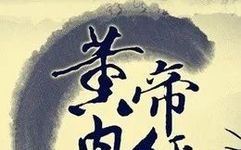The Huangdi Neijing (Yellow Emperor’s Inner Canon) is divided into two parts: Ling Shu (Spiritual Pivot) and Su Wen (Simple Questions). It is the earliest existing theoretical work of Traditional Chinese Medicine (TCM) and one of the four great classics of traditional medicine (the other three being Nanjing (Classic of Difficult Issues), Shang Han Za Bing Lun (Treatise on Cold Damage and Miscellaneous Diseases), and Shen Nong Ben Cao Jing (Shen Nong’s Classic of Materia Medica)). This book has had a profound impact on the establishment of TCM theories in later generations. It is said to be a record of discussions on medicine between the Yellow Emperor and several ministers, including Qi Bo, Lei Gong, Bo Gao, Yu Fu, Shao Shi, Gui Yu Qu, and Shao Yu. It is classified under the medical category in the Four Great Books.
The Huangdi Neijing is divided into Su Wen and Ling Shu.
Su Wen focuses on discussing the organs, meridians, causes of diseases, pathogenesis, syndromes, diagnostic methods, treatment principles, and acupuncture.
Ling Shu is an inseparable sister text to Su Wen, with content that is largely similar. In addition to discussing organ functions, causes of diseases, and pathogenesis, it emphasizes meridians and acupuncture points, acupuncture tools, needling techniques, and treatment principles.
The Huangdi Neijing is a comprehensive medical book that establishes the theories of TCM, including the “Yin-Yang and Five Elements Theory,” “Pulse Theory,” “Zang-Xiang Theory,” “Meridian Theory,” “Etiology Theory,” “Pathogenesis Theory,” “Syndromes,” “Diagnostic Methods,” “Treatment Principles,” “Health Preservation Theory,” and “Qi Regulation Theory” based on the theories of Huang-Lao Daoism. It discusses medicine from a holistic perspective, presenting a model of “integrative medicine” that encompasses natural, biological, psychological, and social aspects. According to modern scholars, the traces of Huang-Lao Daoism found in the current text are believed to have been inserted by the Daoist Wang Bing during the Sui and Tang dynasties. Its basic materials are derived from the long-term observations of ancient Chinese on life phenomena, extensive clinical practices, and basic anatomical knowledge.
The Huangdi Neijing lays the foundation for understanding human physiology, pathology, diagnosis, and treatment, making it one of the most influential medical works in China, often referred to as the “ancestor of medicine.”
Origin of the Name
The Han Shu (Book of Han) records four types of TCM texts: “Medical Classics,” “Classic Formulas,” “Immortal Texts,” and “Sexual Techniques.” The Huangdi Neijing is included in the “Medical Classics.”
The term “Medical Classics” refers to works that elaborate on medical theories regarding human physiology, pathology, diagnosis, treatment, and prevention. It is called “classics” due to its importance. The ancients referred to important books that had certain rules and were essential for study as “classics,” such as the Confucian “Six Classics,” Laozi’s “Dao De Jing,” and the simple “Three Character Classic.” The term “Neijing” does not refer to the “Five Internal Yin and Yang” as mentioned in Wu Kun’s Su Wen Zhu or Wang Jiuda’s Neijing He Lei, nor does it refer to Zhang Jiebin’s Lei Jing which states “the internal refers to the way of life,” but simply contrasts with “external.” This is similar to the “Inner Commentary” and “Outer Commentary” of the Han Poetry, the “Inner Commentary” and “Outer Commentary” of the Spring and Autumn Annals, and the “Inner Chapters” and “Outer Chapters” of Zhuangzi. The Huangdi Wai Jing and the texts of Bian Que and Bai Shi have all been lost and are no longer transmitted.
Time of Composition
The Huangdi Neijing, also known as the “Inner Canon,” is one of the earliest texts in China and is the foremost of the four great classics of traditional Chinese medicine. It is said to have been authored by the Yellow Emperor, hence its name. However, it is widely accepted that this book was finalized during the Western Han dynasty and was not written by a single person, but rather developed and compiled by various Huang-Lao physicians throughout Chinese history. As pointed out in the Huainanzi, the use of the name “Yellow Emperor” aims to trace back to the origins and emphasize the early emergence of Chinese medical culture. It is not merely a saying of one time or the work of one person.
There are three main viewpoints regarding the time of composition of the Huangdi Neijing:
Pre-Qin Period
Those who hold this view include Huangfu Mi of the Jin dynasty and Lin Yi and Gao Bao Heng of the Song dynasty. They believe that a scientific masterpiece like the Huangdi Neijing could only have been authored by a wise sage, thus it must have been written by the Yellow Emperor.
Warring States Period
Those who support this view include Shao Yong, Cheng Hao, Sima Guang, Zhu Xi of the Song dynasty, and Sang Yue, Fang Yizhi, Fang Xiaoru, and Wei Litong of the Ming dynasty. Their main arguments are: first, comparing Huangdi Neijing Su Wen with the Zhou Li from the same Warring States period shows many similarities, sufficiently proving that both texts are products of the same era and ideological system; second, the medical content in Shiji Bian Que Zhuan is similar to that in Huangdi Neijing Su Wen, but is much more primitive, while the medical content in Shiji Cang Gong Lie Zhuan is more advanced than that in Huangdi Neijing Su Wen, leading to the inference that Huangdi Neijing must have been written after the time of Bian Que and before the time of Cang Gong, thus during the Warring States period; finally, the literary style of Huangdi Neijing is indicative of the Warring States period, as pre-Qin literature often employed rhymes, while Su Wen contains a significant amount of rhymed text.
The Four Great Books further affirmed this view, as it holds a high status in ancient Chinese academia, leading many to accept this perspective.
Western Han Period
Ming dynasty scholar Lang Ying inferred from the legend of Xiang Di making wine during the time of Yu the Great and the appearance of “Luo” in the Han dynasty that Su Wen was produced during the Western Han period.
Modern TCM experts such as Liu Changlin and Wu Wending also hold this opinion. Their main arguments are: first, the Huangdi Neijing is approximately 200,000 words long, which would have made it a monumental work over 2000 years ago. Compiling such a medical text requires a stable social environment and significant human and material resources, which would have been impossible during the Warring States period of continuous warfare and fragmentation. Only during the Western Han period, with political stability and economic development, could medical practitioners compile medical texts; second, the Huainanzi states that “the common people often respect the ancient and despise the present, so those who follow the Dao must record the names of Shen Nong and the Yellow Emperor to be able to enter the discourse.” The close connection of the Huangdi Neijing in both title and ideological content with the “Huang-Lao School” provides evidence that it could only have been completed during the peak of the “Huang-Lao School” in the Western Han period; third, Sima Qian’s Shiji Cang Gong Lie Zhuan records that during the early Western Han period, the famous physician Chunyu Yi did not have the Huangdi Neijing among the ten medical books he received from his teacher, which also indicates that the Huangdi Neijing could not have been completed before the Western Han period.
From the above viewpoints, it can be seen that ancient scholars believed the Huangdi Neijing was most likely completed during the Warring States period. However, it should not be assumed that all chapters of Su Wen and Ling Shu originated from that time. The medical scholar Lü Fu during the late Yuan and early Ming dynasties expressed a balanced view, stating that the Neijing was not the work of a single person or a single time. Scholars such as Yao Jiheng, Zhou Mu, Cheng Minzheng, and Huang Shengzeng also agreed with Lü Fu.
A more scientific viewpoint is that the Huangdi Neijing was not completed by a single author in a short time, but rather compiled by multiple authors over a long period:
1. Pre-Qin literature often employed rhymes, and some chapters of the Huangdi Neijing also contain many rhymes, suggesting that these chapters may be works from the pre-Qin period.
2. Compared to the Eleven Meridians Acupuncture Classic unearthed from the Mawangdui tomb in Changsha in 1973, the medical texts found in the Gansu Wuwei Han tomb in 1972, and the “Six Wang Bin Pan” and “Tai Yi Nine Palaces Divination Plate” from the Western Han Ru Yin Marquis tomb in Anhui in 1977, it can be seen that some chapters in Ling Shu were written during the Spring and Autumn and Warring States periods, while others were written earlier in the Western Han period.
3. Some references in the Huangdi Neijing to texts such as Shang Xia Jing and Kui Du are works from the Warring States period or even earlier.
4. The term “Qian Shou” used in Su Wen Baoming Quansheng Lun refers to the citizens during the Warring States and Qin periods, while the terms “Xiang Fu Zhi Guan” and “Zhou Du Zhi Guan” in Su Wen Ling Lan Mi Dian Lun are official titles that appeared during the Cao Wei period.
5. Some chapters in Ling Shu were written later, such as the “Yin Yang Xi Ri Yue Pian” which contains the phrase “Yin is the birth of Yang in the first month,” indicating it was completed after the promulgation of the Taichu calendar in the first year of Emperor Wu of Han (100 BC).
6. Some chapters in Su Wen use the Gan-Zhi calendar, which was a practice that began in the Eastern Han period. The seventh volume of Su Wen has long been lost, and Wang Bing supplemented it with texts from his teacher Zhang Gong’s secret manuscript, including Tian Yuan Ji Da Lun, Wu Yun Xing Da Lun, Li Wei Zhi Da Lun, Qi Jiao Bian Da Lun, Wu Chang Zheng Da Lun, Li Yuan Zheng Ji Da Lun, and Zhi Zhen Yao Da Lun, which are actually from another medical book, Yin Yang Da Lun. The use of the Jiazi calendar indicates it must have been after the promulgation of the Sifen calendar in the second year of Emperor Zhang of Han (85 AD); since it was cited by Zhang Zhongjing in his Shang Han Za Bing Lun, it must have been written before Zhang Zhongjing.
7. The seventy-second chapter of Su Wen, Ci Fa Lun, and the seventy-third chapter, Ben Bing Lun, were already known to be missing when Wang Bing annotated Su Wen, but were later included as “lost chapters” by Liu Wenshu in his Su Wen Ru Shi Yun Qi Lun Ao. These two chapters are believed to be forgeries from the Tang and Song periods.
In summary, the Huangdi Neijing was not completed in a single time, nor by a single author. Its writing should have begun in the Warring States period, with some chapters completed during the Han dynasties. The supplements by Wang Bing and the additions by Liu Wenshu should not be regarded as part of the Huangdi Neijing text, but it is acceptable to consider them as belonging to the Neijing by convention.
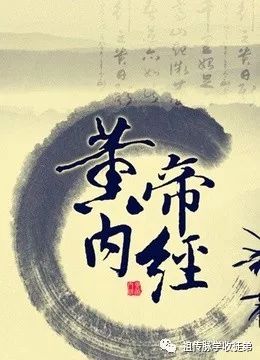
Transmission and Evolution
Su Wen
The name Su Wen first appeared in the self-preface of Zhang Zhongjing’s Shang Han Za Bing Lun: “I compiled using Su Wen, Jiu Juan, Ba Shi Yi Nan, Yin Yang Da Lun, Tai Lu, and Yao Lu.”
Lin Yi and Gao Bao Heng’s “New Correction” theory states that humans are life forms with Qi, shape, and quality, and it is inevitable that various diseases will occur, thus explaining it in a question-and-answer format, which is the original meaning of Su Wen. Yang Shangshan of the Sui dynasty compiled the Neijing and directly referred to it as Huangdi Neijing Tai Su, which is quite insightful.
From the Warring States period until the Qi and Liang dynasties, Su Wen maintained its original nine-volume structure until the full text was annotated during the Yuan dynasty. However, by the time of the Yuan dynasty, the seventh volume of Su Wen had already been lost. Wang Bing believed this was due to fears of misattribution, hence the seventh volume was hidden by the Shi family. Wang Bing claimed to have obtained the secret manuscript from his teacher Zhang Gong, and thus compiled annotations to ensure its immortality, combining the old volumes with the eighty-one chapters into twenty-four volumes. Due to Wang Bing’s inclusion of the Tian Yuan Ji Da Lun, Wu Yun Xing Da Lun, Li Wei Zhi Da Lun, Qi Jiao Bian Da Lun, Wu Chang Zheng Da Lun, Li Yuan Zheng Ji Da Lun, and Zhi Zhen Yao Da Lun, the original nine volumes expanded significantly to the now popular Huangdi Neijing Su Wen. There are also the twelve-volume editions published by the Hu family during the Yuan dynasty and the fifty-volume editions from the Ming dynasty, but their content and chapter order remain unchanged, just as in Wang Bing’s original work.
Ling Shu
The Ling Shu was originally called the Acupuncture Classic. The first chapter, Jiu Zhen Shi Er Yuan, contains the phrase “First establish the Acupuncture Classic,” which serves as a self-introduction. It was later referred to as Jiu Juan, and then again as Acupuncture Classic by Huangfu Mi in the Jin dynasty, and subsequently as Jiu Xu, Jiu Ling, and Huangdi Zhen Jing.
The name Ling Shu first appeared in Wang Bing’s preface and annotations of Su Wen. While annotating Su Wen, Wang Bing quoted the phrase “The meridians are internal, and the branches and cross-branches are external” twice, once referring to it as Ling Shu in the San Bu Jiu Hou Lun and again as Acupuncture Classic in the Tiao Jing Lun, indicating that Ling Shu is indeed the Acupuncture Classic. Other annotations of Su Wen that reference the Acupuncture Classic are all texts from Ling Shu, further proving this point.
The evolution of the name Ling Shu is roughly as follows, and its naming significance requires specific analysis. Ma Hong and Zhang Jiebin believe it is due to the profound mysteries of the pivot. Ling Shu primarily studies acupuncture issues, hence it is called the Acupuncture Classic; because it consists of nine volumes, it is named Jiu Juan, and thus also has names like Jiu Ling and Jiu Xu.
As for Ling Shu, although there are several transmission systems such as Jiu Juan, Jiu Xu, Jiu Ling, and Acupuncture Classic, many have been lost after the Sui and Tang dynasties. During the Song dynasty, Lin Yi and Gao Bao Heng attempted to correct medical texts but found it too fragmented to be able to do so. The Ling Shu Jing presented by Shi Song during the Southern Song dynasty, although different in content from Wang Bing’s Ling Shu and Wang Wei Yi’s Ling Shu, is still the only version that has survived. Shi Song’s decision to change Ling Shu to twenty-four volumes was merely to match the number of volumes in Wang Bing’s annotated Su Wen, without any deeper significance, as both texts were originally nine volumes, thus ultimately both became twenty-four volumes.
In summary, Wang Bing’s twenty-four volume annotated Su Wen is the earliest existing version, which has also been corrected by the Medical Text Correction Bureau during the Northern Song dynasty. Shi Song’s twenty-four volume Ling Shu is the earliest and only version that has survived.
Theoretical Spirit
The basic theoretical spirit of the Huangdi Neijing includes: holistic concepts, Yin-Yang and Five Elements, Zang-Xiang and meridians, etiology and pathogenesis, diagnostic methods and treatment principles, preventive health, and Qi regulation theory, etc.:
1. The “holistic concept” emphasizes that the human body and the natural world are a whole, and that the structure of the human body and its various parts are interconnected.
2. The “Yin-Yang and Five Elements” theory is used to explain the relationship of opposition and unity between things.
3. The “Zang-Xiang and meridians” focuses on studying the physiological functions, pathological changes, and interrelationships of the five organs, six bowels, twelve meridians, and eight extraordinary meridians.
4. The “etiology and pathogenesis” explains the internal mechanisms of whether various pathogenic factors affect the human body and the occurrence and changes of diseases.
5. The “diagnostic methods and treatment principles” are the basic principles of TCM for understanding and treating diseases.
6. The “preventive health” systematically elaborates on TCM’s health preservation theories, summarizing important experiences in health preservation and disease prevention.
7. The “Qi regulation theory” studies the impact of natural climate on human physiology and pathology, and uses this as a basis to guide people in seeking benefits and avoiding harm.
Throughout history, medical practitioners have conducted research on the Huangdi Neijing using classification methods. Among them, Yang Shangshan’s classification is the most detailed, dividing it into 18 categories; while Shen Youpeng’s is the simplest, dividing it into 4 volumes. The consensus among various schools is on the four major theories: Zang-Xiang (including meridians), pathogenesis, diagnostic methods, and treatment principles. These four major theories are the main content of the theoretical system of the Huangdi Neijing.
Although the Neijing is the source of TCM theory, summarizing and discovering many rules and conclusions that align with objective reality, contributing greatly to the development of TCM, it cannot be denied that there are also many erroneous speculations and forced explanations within the text. Many theories are merely hypotheses that require verification or falsification by future generations. The Neijing, written over two thousand years ago, was limited by the technological level of the time and could not conduct in-depth and detailed essential research on the human body, but could only understand the objective world from a macro perspective, using metaphorical comparisons to explain natural science issues. While this approach can reveal many objective laws and correct speculations, it inevitably leads to numerous erroneous guesses and distorted explanations. Today, we should not treat the Neijing as a sacred text, fostering a mindset that respects the ancient while despising the present; we must extract its essence and discard its dross.
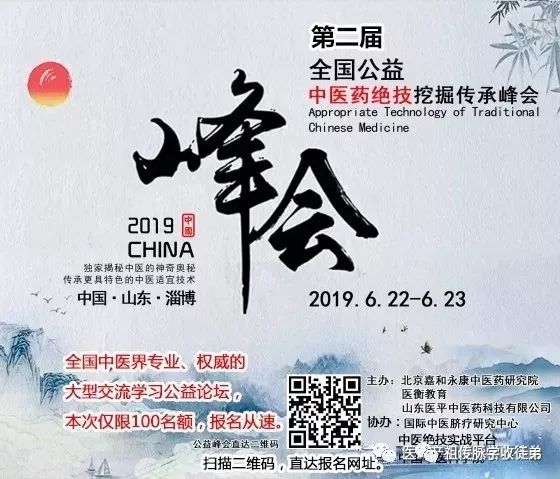
|
Many young people are in a sub-healthy state due to high work pressure and fast-paced lifestyles, leading to disordered organ functions and imbalanced Qi and blood. Did you know that for a body that has lost balance, one can not only choose exercise for health but also drink health-preserving herbal teas for adjustment? Most health teas utilize the form of tea to exert medicinal effects. Now that spring is here, how should we choose? |
Tea culture and TCM have a very close relationship. Due to the excellent medicinal effects of tea, the term “tea medicine” appeared as early as the Tang dynasty. Tea is not only a medicine but also has good effects on longevity and anti-aging.
Chinese people have always had a habit of drinking tea, which not only quenches thirst but also has certain health benefits. Spring is also the season for new tea to be released, so here are a few herbal health teas to introduce.
Herbal Health Teas
Goji Berry Tea: Goji berry tea nourishes the kidneys, benefits the liver, moistens the lungs, brightens the eyes, strengthens the muscles and bones, and alleviates fatigue. It is particularly suitable for eye fatigue caused by long-term computer use. To prepare, simply add a dozen goji berries to hot water and drink frequently; continuous consumption for two months will yield effective results.
Chrysanthemum Tea: Chrysanthemum has the effect of clearing the liver and brightening the eyes, and is effective for eye strain, headaches, and hypertension. After lunch each day, brew five or six chrysanthemum flowers and drink continuously for three months to see results. Adding a little honey during brewing enhances the taste.
Rose Tea: Rose tea cools the blood and nourishes the skin, thus improving dry skin. Due to its strong floral fragrance, it is also effective for treating bad breath. Rose tea aids digestion and reduces fat, making it beneficial for weight loss, especially when consumed after meals. However, due to its astringent properties, those with constipation should avoid drinking it.

Honeysuckle Tea: Honeysuckle clears heat and detoxifies, and can treat viral colds, acute and chronic tonsillitis, and periodontal disease. To prepare, select 10 grams of honeysuckle and brew with boiling water for frequent consumption.
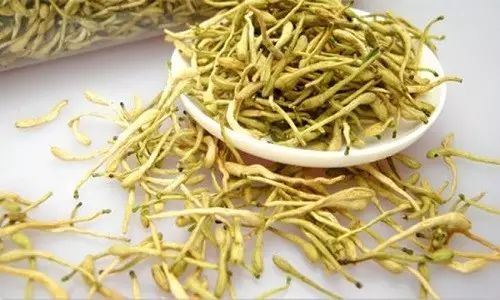
Safflower Tea: Safflower is sweet and non-toxic, promotes blood circulation in men, and regulates menstruation in women. It can invigorate blood, nourish blood, lower blood pressure, reduce lipids, inhibit thrombosis, protect the heart, and enhance beauty. Both safflower and safflower seeds can be brewed as tea, making it a healthy and tasty option for all ages. However, it is advisable to limit consumption before bedtime to avoid affecting sleep.
Licorice Tea: Licorice 10 grams, tea leaves 5 grams, salt 8 grams, with water 1000 milliliters. Following this ratio, first boil the water, then add licorice, tea leaves, and salt, and boil for about 10 minutes before drinking. It can treat wind-heat toothache, fiery eyes, and cold cough.
Lotus Leaf and Licorice Tea: Fresh lotus leaves 100 grams, licorice 5 grams, with water 1000 milliliters. Following this ratio, first wash and chop the lotus leaves, boil the water, then add licorice and lotus leaves, and simmer for over 10 minutes. Strain out the lotus leaf residue, add an appropriate amount of sugar, and drink. It has health benefits of clearing heat, relieving summer heat, and promoting urination.
Peppermint and Licorice Tea: Fresh peppermint leaves 10 or more pieces, licorice 5 grams, green tea 5 grams, and Taizi ginseng 10 grams, with boiling water 500 milliliters. Following this ratio, brew for over 10 minutes, strain out the residue, add an appropriate amount of sugar, and mix well before drinking. It has effects of relieving heat, detoxifying, inducing sweating, and is particularly effective for headaches, red eyes, sore throat, and wind-heat colds.
Water Chestnut and Reed Root Tea: Fresh water chestnuts 100 grams, cleaned and chopped; fresh reed roots 100 grams, with water 1000 milliliters. Following this ratio, first boil the water, then add water chestnuts and reed roots, and simmer for about 20 minutes. Strain, add an appropriate amount of sugar, and drink. It has functions of clearing heat, resolving phlegm, generating fluids, quenching thirst, and lowering blood pressure.
Chenpi and Ginger Tea: Chenpi 20 grams, fresh ginger slices 10 grams, licorice 5 grams, tea leaves 5 grams, with water 1000 milliliters. Following this ratio, first boil the water, then add Chenpi, ginger slices, licorice, and tea leaves, and brew for about 10 minutes before straining and drinking. It has health benefits of quenching thirst, relieving summer heat, stopping cough, and resolving phlegm, and aids digestion.
Hawthorn Tea: Hawthorn 20 grams, sugarcane 200 grams, boil with water and strain, and drink as tea. It has health benefits of clearing heat, relieving fire, and moistening dryness.
Jue Ming Zi Tea: Jue Ming Zi 20 grams, stir-fried until yellow, brew with boiling water, and drink as tea. It has functions of dispelling wind, clearing heat, brightening the eyes, moistening the intestines, and relieving constipation, and is particularly effective for symptoms such as excessive fire, red and swollen eyes, headaches, blurred vision, and constipation, as well as hypertension.
Apple Tea: Apple tea has miraculous effects for treating headaches. To prepare, slice an apple thinly, add water, and simmer to strain, then drink as tea. Continuous consumption for ten days will yield results.
Lemon Tea: This tea can smooth Qi, resolve phlegm, eliminate fatigue, and relieve headaches. Its preparation is also very simple: slice fresh lemon into two or three pieces, add 1 gram of salt, and brew with hot water. This tea should be consumed hot, as it will taste bitter when cold. It can be consumed before or after meals without harming the stomach.
Spring Tea Has Higher Nutritional Value After Half a Month
Freshly picked tea leaves have a tempting aroma, enticing people to drink them while they are “fresh,” but in fact, the nutritional value is higher after the tea has been left for a period of time.
New tea is made from leaves that have been picked for less than a month, and the beneficial substances such as polyphenols, alcohols, and aldehydes have not fully oxidized, while the caffeine, active alkaloids, and various aromatic substances are high, which can easily stimulate the nervous system, making it unfavorable for those with nervous weakness or cardiovascular diseases. Moreover, frequently drinking new tea may lead to symptoms such as stomach pain, bloating, and constipation. Very fresh tea leaves can irritate the gastric mucosa, worsening the condition for patients with gastric diseases.
Therefore, spring tea should be left for at least a week, preferably around half a month, allowing the beneficial substances in the tea to oxidize naturally before drinking. The advocacy for drinking new tea “fresh” does not mean to drink it immediately upon receiving it, but rather that it should ideally be consumed within three months after opening the package.
New tea emphasizes color, aroma, and taste. After brewing, it should have a clear and transparent appearance, and the taste should be sweet upon aftertaste. If fruits such as apples or pears are added to the tea, the fragrance of the fruit will also blend into the tea, creating a unique flavor.
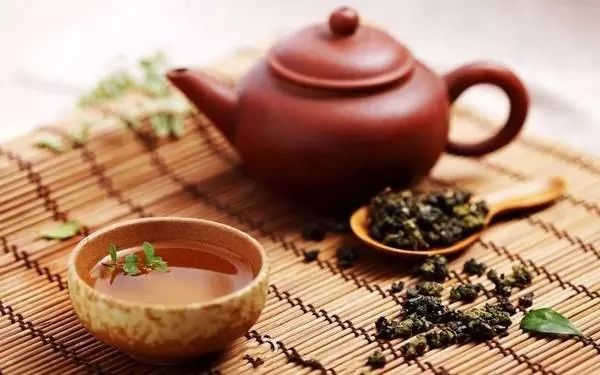
Storage Methods for New Tea
Even the best tea can easily lose its flavor if not stored properly. Many factors can cause undesirable changes in tea, including temperature, humidity, odors, light, air, and microorganisms, all of which can lead to the loss of color and aroma in tea.
Quicklime Storage Method: Choose a dry, sealed ceramic jar, place it in a dry, cool place, wrap the tea leaves in thin cowhide paper, tie it tightly, and arrange them in layers around the sides of the jar. Then place a bag of quicklime in the center of the tea package, fill the jar, and seal the opening. The quicklime bag should be replaced every 12 months to keep the tea fresh and prevent spoilage.
Charcoal Storage Method: Take 1 kilogram of charcoal, place it in a small cloth bag, and put it at the bottom of a clay jar or small iron box. Then layer the packaged tea leaves on top until full, and seal the jar. The charcoal bag should be replaced monthly.
Thermos Bottle Storage Method: Place the tea leaves in a newly purchased thermos bottle, then seal the opening with white wax and wrap it with tape. This method is most suitable for home storage of tea.
Refrigeration Storage Method: Place new tea with a moisture content below 6% in iron or wooden tea canisters, seal the opening with tape, and store it in the refrigerator at a temperature of 5°C for optimal results.
Additionally, tea should be stored in a high, ventilated place, away from direct sunlight. It is best to buy enough tea to consume within a month.
I Copyright Statement: Respect knowledge and labor, please retain copyright information when reprinting. The copyright of the content published on this platform belongs to the relevant rights holders. If there are any improper uses, please feel free to contact us for negotiation.
Currently, over 100,000 people have followed and joined us.
















See more latest information on TCM, Chinese medicine, hygiene, and health.
Please long press the QR code below to follow us



